
views
What is script coverage?

Script coverage is a short summary and analysis of a screenplay. Coverage documents are usually only 3–4 pages long and give a brief overview of the script’s plot. After that, the person who read the script comments on the parts of the script that really worked and the issues that bring it down. Because screenplays can sometimes be up to 120 pages, film and TV executives read the shorter coverage documents instead to decide if the script is something they’re interested in and want to pursue. Script coverage is usually written by interns, assistants, or professional script readers. Script coverage documents are primarily used when studios are first looking for pitches and new scripts before they’re put into production.
Writing Script Coverage
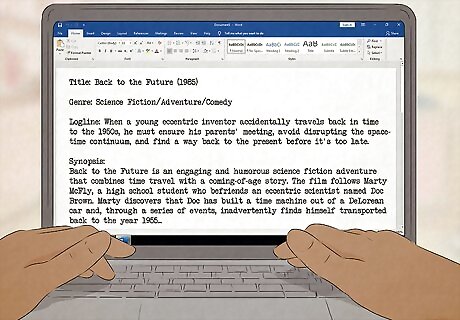
Read through the script. Try to read the script all in one sitting so you stay focused. As you’re reading, jot down important characters and plot points, but avoid taking a lot of notes on the story so you don’t interrupt your flow. Take about 1 minute per page so you finish your read-through within 1–2 hours. Once you finish reading, dive right into writing your coverage while the script is fresh in your mind.
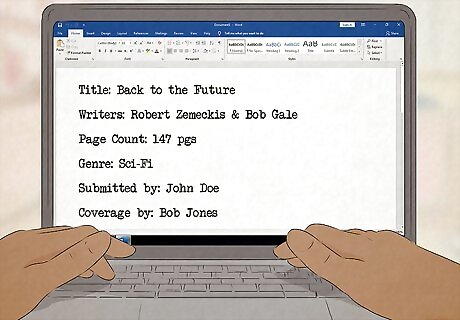
Include the script’s information on the cover page. At the top of the first page, list the name of the script, the screenwriter’s name, and how many pages the actual screenplay was. If there are any actors or directors attached to the screenplay, then be sure to list them as well. You may also list the genre of the script as well as information about who submitted it. You may also list your name so whoever reads the coverage knows that you wrote it. Title: Back to the FutureWriters: Robert Zemeckis & Bob GalePage Count: 147 pgsGenre: Sci-FiSubmitted by: John DoeCoverage by: Bob Jones
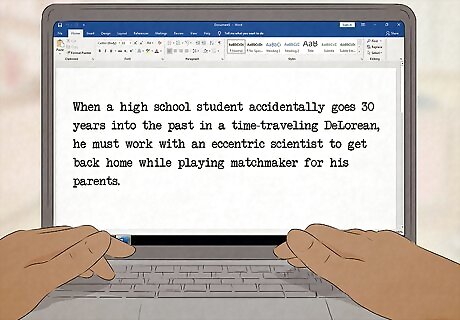
Write a 1–2 sentence logline of the screenplay’s premise. Loglines are a brief summary of the script’s central plot to help hook readers. Some screenwriters will provide a logline for their script that you’re able to use in your coverage. If you have to write your own logline, mention the main character, the inciting incident that drives the plot, and what the character is trying to achieve. Try to keep your logline between 25–50 words. For Back to the Future, the logline could be, “When a high school student accidentally goes 30 years into the past in a time-traveling DeLorean, he must work with an eccentric scientist to get back home while playing matchmaker for his parents.” For Jaws, the logline may be, “When a killer shark terrorizes a small beach town, the local sheriff must team up with a marine biologist and old fisherman to hunt it down.” For The Hangover, your logline could be, “When 3 groomsmen can’t find the groom-to-be after a drunken bachelor party, they must retrace their steps through Las Vegas to find him.”
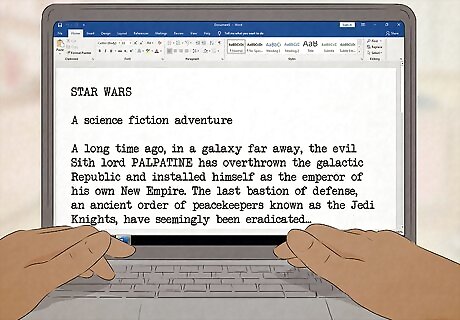
Retell the main plot of the story with a 1–2 page synopsis. Rather than repeating every beat of the plot, try to summarize the script’s main ideas and major plot points a reader needs to understand what’s happening. Use the present tense, and write from a third-person perspective to recount the plot points. Be sure to cover the inciting incident that sets the plot in motion, the big events that alter the characters’ lives, the climax, and the resolution. When you first introduce a character or location, put the name in all caps so it stands out from the rest of the synopsis. If the plot is confusing or doesn’t make sense, avoid filling in the gaps with what you think happened. Only summarize what was actually written in the screenplay. Try to avoid covering subplots and minor characters unless they connect and have a big impact later in the main storyline.
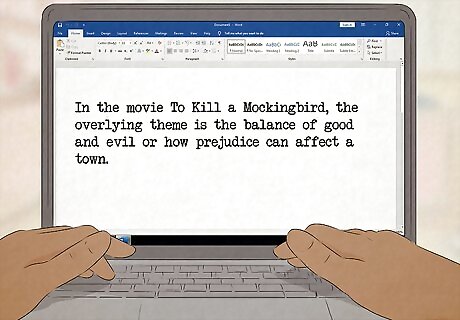
Critique what does and doesn’t work with ½–1 page of comments. Start with a paragraph summarizing all of the script’s strengths and weaknesses you want to address. Focus on aspects like the concept, story, characters, dialogue, and visuals. Try to be as specific as possible about what parts of the script you liked and what still needs work. Some questions to keep in mind when you’re writing your commentary are: Concept: Is the story idea unique and memorable? Does the script fulfill the intention it’s trying to achieve? Do subplots add to or detract from the main storyline? Story Structure: Do the story events build at a good pace? Does it feel like scenes are missing or going on too long? Are the events in the plot easy or difficult to follow? Characters: Are the characters compelling or interesting to you? Do the characters have goals they’re motivated toward achieving? Do the characters go through meaningful and believable changes throughout the script? Dialogue: Does the dialogue sound natural like a real conversation? Does the dialogue match the tone of each character? Do the characters over-explain the plot? Action/Visuals: Are the script’s action blocks concise and easy to visualize? Are there any elaborate locations or action pieces that would be difficult to achieve during production? Will people be interested in seeing the script as a movie?
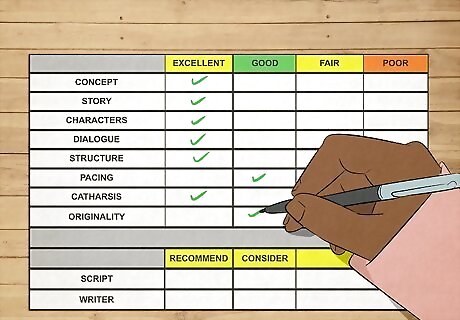
Fill out a rating grid to score individual aspects of the script. The rating grid helps you score parts of the script to mark if they were excellent, good, fair, or poor so someone reading your coverage knows what works and what doesn’t at a glance. Put a mark in the appropriate box on the grid for each category based on your thoughts and commentary. While the categories on a rating grid may vary between different coverage documents, the common categories are: Characters Dialogue Plot Setting Story structure Theme or concept Writing ability Budget
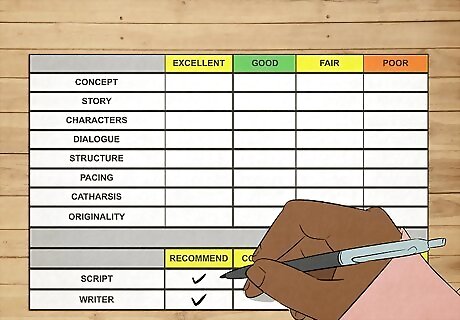
Give a recommendation on the script based on your critique. The standard recommendations for script coverage are “recommend,” “consider,” and “pass.” Look through your commentary and the rating grid you filled out, and decide if the script would be ready to shoot. If everything about the script was excellent, then “recommend” it to show that it’s ready for production. If there are minor issues that need some adjustments but the concept or writing was strong, then put “consider.” If there are a lot of areas that could use improvement in the script, then “pass” on it to show that it’s not ready. Most scripts you write coverage for will be “considered” or “passed.” Only give out a “recommend” if the script really wowed you.
Finding Jobs in Script Coverage

Offer script coverage to friends or writers’ groups. Start networking with other writers and check apps like Meetup to join any screenwriting groups that you find. Ask other members of the group if they want notes on their script, and offer to give them constructive feedback and coverage. While you may not get paid for covering scripts from a writers’ group, you’ll still build up your writing experience and fill your portfolio with example coverage documents. If you’re writing a screenplay as well, swap scripts with another person so you’re able to get feedback on what you’ve written too. Start your own writing group if you’re not able to find one in your area. There may be other people who are also looking for a group to join.

Check for internships or assistant positions at studios or agencies. Reach out to film studios, production companies, or agencies that represent screenwriters to see if they have any open script reader positions. Because higher-ups in the company don’t have time to read all the scripts that get submitted, assistants and interns usually do a bulk of the reading and provide coverage. On average, expect to make around $40–60 USD per script you write coverage for.

Apply to read scripts for screenwriting contests. Screenwriters submit to contests to get more eyes on their script and to receive feedback. Because there are a lot of contest submissions, they may hire script readers to look through the screenplays and write coverage for them. Search online to see if there are any screenplay competitions or festivals happening, and send in sample coverage if they’re hiring. Competitions may pay around $25–60 USD per script you cover. Some competitions or contests only hire readers who have read scripts for agencies, studios, or production companies, so always check the job posting to find the requirements.
Script Coverage Services for Writers

CoverflyX CoverflyX lets you swap scripts with other writers so you can give and receive notes. While the notes won’t provide full coverage, they’ll still address the strengths and weaknesses of your screenplay so you know where to make improvements. Cost: Free
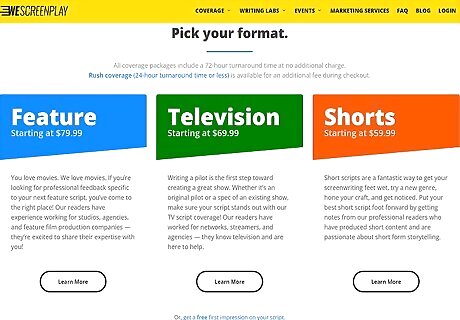
WeScreenplay WeScreenplay offers coverage for feature and television scripts with a quick 72-hour turnaround time. Before you pay and submit your full script, you can even submit the first page for free to get notes on the reader’s first impressions. Cost: $79.99 USD for features, $69.99 USD for TV scripts

The Black List The Black List is a great place for amateur screenwriters to host their scripts so industry professionals can read them. They also offer script evaluations from professional readers that are publicly displayed on your script’s page so other users can see the feedback. Cost: $20–30 USD per month to host a script, $70–100 USD for evaluations
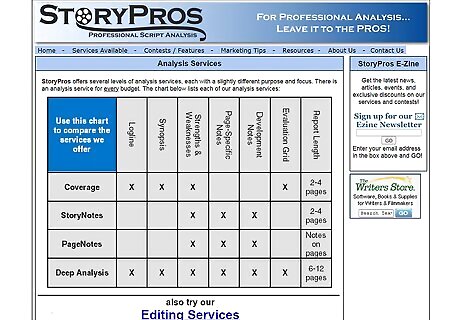
Story Pros Story Pros offers the same coverage to independent writers as their studio clients, so they’re perfect if you want quick and reliable service. Cost: $100 USD
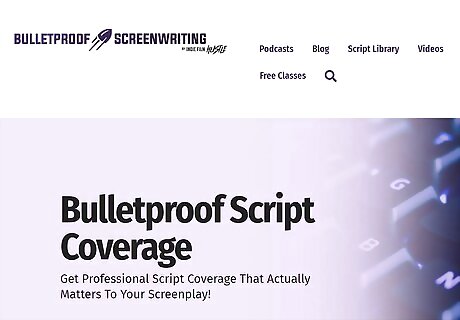
Bulletproof Script Coverage Bulletproof Script Coverage provides coverage based on the type of screenplay you’re writing, whether it’s an indie film or big-budget studio movie. All of their readers have industry experience and you’ll receive detailed coverage notes within 5 days of submitting your script. Cost: $99–199 USD

ScreenCraft ScreenCraft lets you pick the genre of your script when you submit to ensure the person providing coverage has experience reading or writing it. They’ll also provide genre-specific notes to help you make improvements that will help your script sell. Cost: $95–145 USD for 3 pages of notes, $275–295 USD for 7+ pages of notes
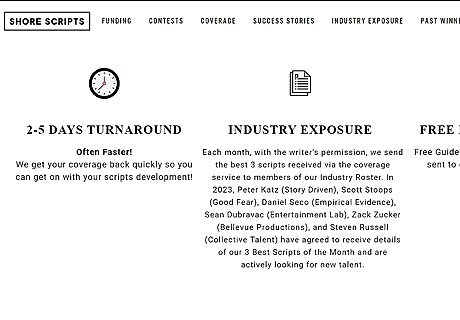
Shore Scripts Shore Scripts offers various tiers for submitting your script depending on how many notes you want and the type of screenplay. You’ll usually get your coverage back within 5 days. As a bonus, Shore Scripts also submits the 3 best scripts they read each month to industry professionals who are looking for new writers. Cost: $95–155 USD
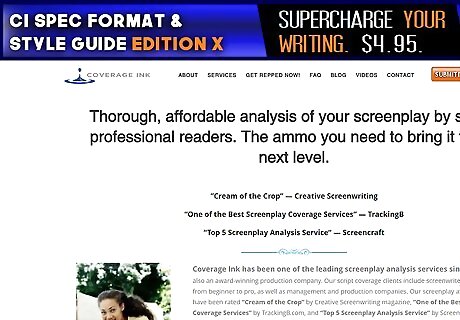
Coverage Ink Coverage Ink has been voted one of the best screenplay analysis services because they provide notes as well as potential solutions for issues they find. Many times, their full analysis is 10–14 pages long so you have a detailed breakdown of what’s working and what isn’t. Cost: $119–155 USD
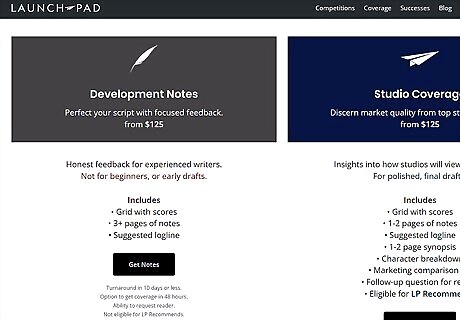
Launch Pad Studio Coverage Launch Pad lets you request specific readers for your script to ensure their experience aligns with the genre of script you’re submitting. Typically, you’ll get your 1–2 pages of notes and full coverage within 10 days of submitting it. Cost: $125–175 USD
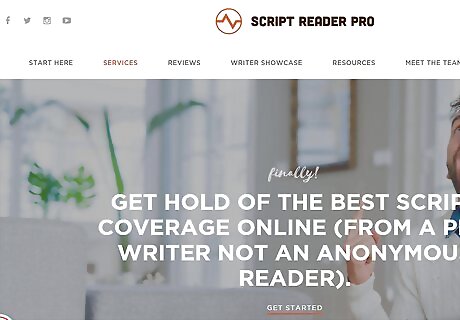
Script Reader Pro Script Reader Pro hires professional screenwriters to read and review your script to ensure you’re getting the most help on your script. They also offer various tiers if you want longer, more in-depth notes for improving your writing. Cost: $169 USD for 4+ pages of notes, $449 USD for 12+ pages of notes
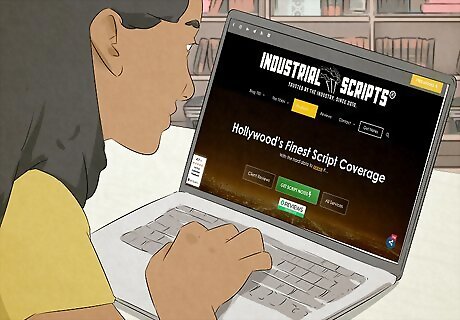
Industrial Scripts Industrial Scripts lets you choose a specific reader for your script and gives recommendations on the next steps to take for your screenplay. They’ll usually take around 2 weeks to read and write notes for your script. Cost: $195–395 USD

















Comments
0 comment